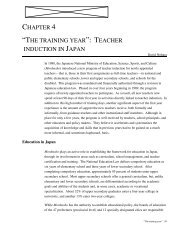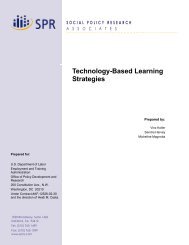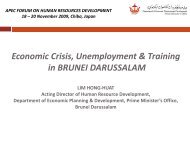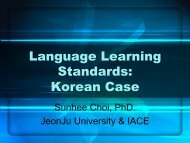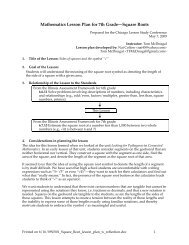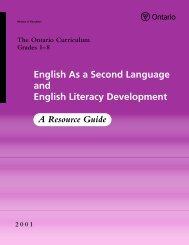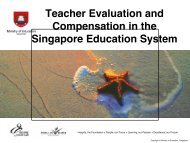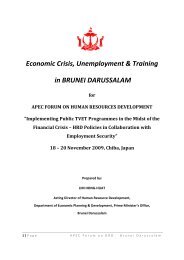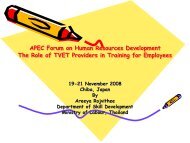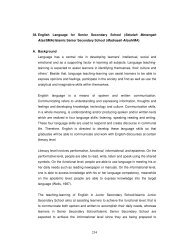Quality Assurance Systems in Asia-Pacific Economic Cooperation
Quality Assurance Systems in Asia-Pacific Economic Cooperation
Quality Assurance Systems in Asia-Pacific Economic Cooperation
Create successful ePaper yourself
Turn your PDF publications into a flip-book with our unique Google optimized e-Paper software.
ENHANCEMENT OF QUALITY ASSURANCE SYSTEMS IN HIGHER EDUCATION IN APEC MEMBER ECONOMIES<br />
<br />
<br />
<br />
<br />
<br />
<br />
<br />
<br />
<br />
<br />
<br />
<br />
<br />
<br />
<br />
<br />
<br />
<br />
the organisation of the program<br />
the didactic concept, didactic philosophy<br />
teach<strong>in</strong>g methods<br />
the curriculum design<br />
student-work, research project and/or practical tra<strong>in</strong><strong>in</strong>g<br />
student assessments/exam<strong>in</strong>ations<br />
the student population (selection, recruitment, prelim<strong>in</strong>ary education)<br />
quality of the staff<br />
the quality of the facilities<br />
<strong>in</strong>ternal quality assurance procedures<br />
the achieved standards<br />
pass rate and drop out<br />
average graduation time<br />
cost per student<br />
op<strong>in</strong>ion of the students about the program<br />
op<strong>in</strong>ion of the staff about the program<br />
op<strong>in</strong>ion of the alumni<br />
accordance to <strong>in</strong>stitutional mission, relationship with other academic <strong>in</strong>stances,<br />
relationship with the social and economic sectors, op<strong>in</strong>ion of employers, under-graduate<br />
follow-up<br />
Areas Considered by CHEA for its Recognition of Accredit<strong>in</strong>g<br />
Agencies<br />
CHEA has `eligibility standards’ and `recognition standards’.<br />
Eligibility Standards: To be eligible for CHEA recognition, the accreditation organisation:<br />
1. demonstrates that the organization’s mission and scope are consistent with the CHEA<br />
Institutional Eligibility and Recognition Policy (Appendix B), <strong>in</strong>clud<strong>in</strong>g that a majority of<br />
the <strong>in</strong>stitutions and programs accredited by the organization grant higher education<br />
degrees. The Policy provides, <strong>in</strong> part, that the recognition process will place <strong>in</strong>creas<strong>in</strong>g<br />
emphasis on the effectiveness of accredit<strong>in</strong>g organizations <strong>in</strong> assur<strong>in</strong>g academic quality<br />
of <strong>in</strong>stitutions or programs;<br />
2. is non-governmental;<br />
3. accredits <strong>in</strong>stitutions that have legal authority to confer higher education degrees;<br />
4. accredits <strong>in</strong>stitutions or programs at generally accepted higher education levels;<br />
5. has written procedures that describe, officially and publicly:<br />
<br />
<br />
the organisation’s decision-mak<strong>in</strong>g processes, policies, and procedures that lead<br />
accreditation actions; and<br />
the scope of accreditation that may be granted, evaluative criteria (standards or<br />
characteristics) used, and levels of accreditation status conferred.<br />
6. has procedures that <strong>in</strong>clude a self-evaluation by the <strong>in</strong>stitution or program and on-site<br />
review by a visit<strong>in</strong>g team, or has alternative processes that CHEA considers to be valid;<br />
7. demonstrates <strong>in</strong>dependence from any parent entity, or sponsor<strong>in</strong>g entity, for the conduct<br />
of accreditation activities and determ<strong>in</strong>ation of accreditation status; and<br />
to<br />
58



